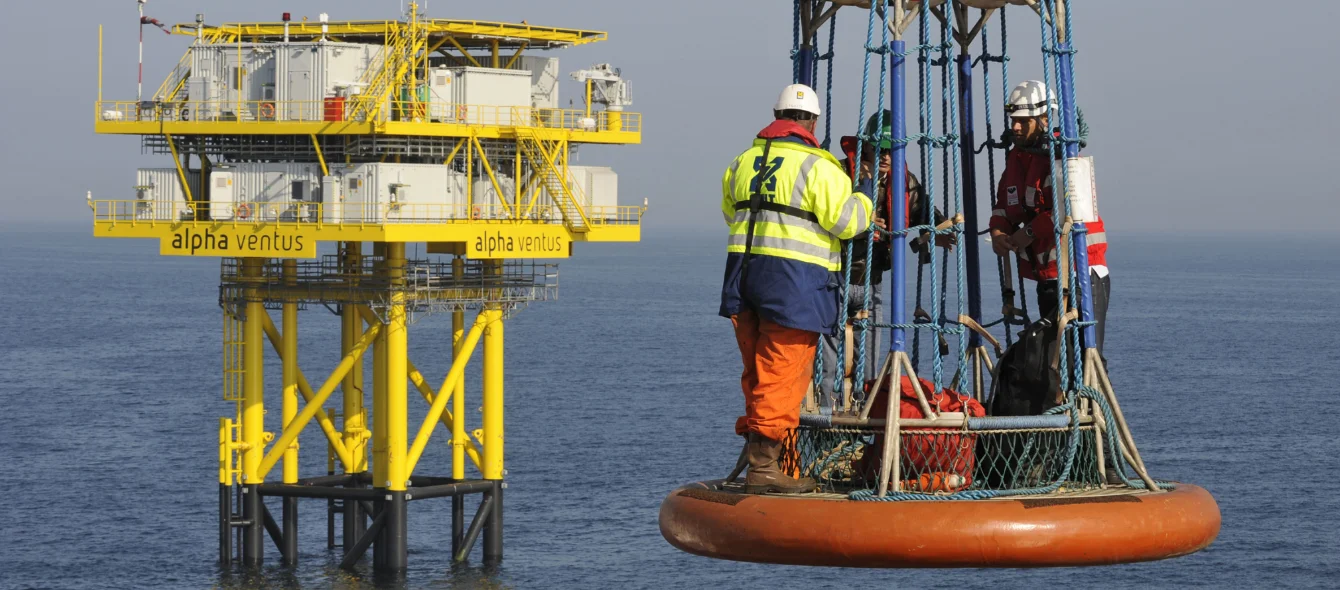Offshore wind energy is on course for growth the world over. Europe plans to increase installed capacity from 12 gigawatts (GW) at present to 60 GW by 2030 and a whopping 300 GW by 2050, reflecting the extremely ambitious targets announced by the European Commission in view of the Green Deal at the end of 2020. In the USA, which only has a few pilot plants off its coasts, several states are rolling out very ambitious expansion plans. The first large-scale projects are being planned, with sights set on building wind farms having a total capacity of 15 GW by 2030. And besides China, more and more countries are placing their chips on offshore wind energy in Asia as well.
Implementing these plans calls for both capital and skilled labour. After all, wind farms require time-consuming and costly planning, construction and maintenance. The independent energy research and business intelligence firm Rystad Energy has calculated the plans’ personnel requirements. The study concludes that more than three times the current number of skilled workers will be needed by 2030.
Most jobs in construction and development
Based on Rystad Energy estimates, the installed capacity of offshore wind farms may well rise to 110 GW by 2025 and 250 GW by 2030, with a quarter being allocable to China. This strong growth will require a huge number of skilled workers. Some 297,000 jobs are still directly or indirectly associated with this branch of industry, a figure that will likely rise to 589,000 by the middle of this decade and surge even higher to 868,000 by the end of it. These numbers are based on full-time equivalents, meaning a year of full-time employment of a single individual.
Employment demand in the offshore wind sector
in full time equivalent workers according to Rystad Energy Offshore Wind CubeThe jobs are distributed between two areas: construction & development and operations & maintenance. Construction & development currently account for 93 percent of these jobs. This share will decrease slightly in the coming years, but Rystad believes that in 2030 the lion’s share, i.e. 88 percent, of the workforce will still be manufacturing turbines and foundations, installing wind turbines and planning offshore wind farms. By 2030, as much as 54 percent of new jobs in the sector will be created in turbine production alone. Experts at Rystad predict that this will lead to the likes of Siemens Gamesa, Vestas and GE Renewables in particular needing more skilled labour.
Strong job growth in Europe in coming years
This will be driven by the fact that about two-thirds of the investment costs of offshore wind farms are usually incurred before commissioning. Based on the study, manpower needs will increase as long as capacity continues to be added on a grand scale. It also forecasts a rise in personnel dedicated to wind farm operation as expansion will lead to increasing numbers of wind turbines requiring 20 years or more of maintenance.
The analysis further reveals that the development will definitely vary from one region to the next. In Europe, where expansion is making progress, demand for skilled labour could more than triple from 110,000 today to 350,000 by 2030. Growth is expected to be especially strong through 2025. By contrast, in Asia (excluding China) the boom is expected to hit in the second half of the decade. The People’s Republic will continue to increase its offshore capacity, but the nation’s labour market is expected to stagnate. Looking to the Americas, major projects can be expected to be implemented around the turn of the decade above all in the USA as well as in Brazil.
photo credit: RWE AG
